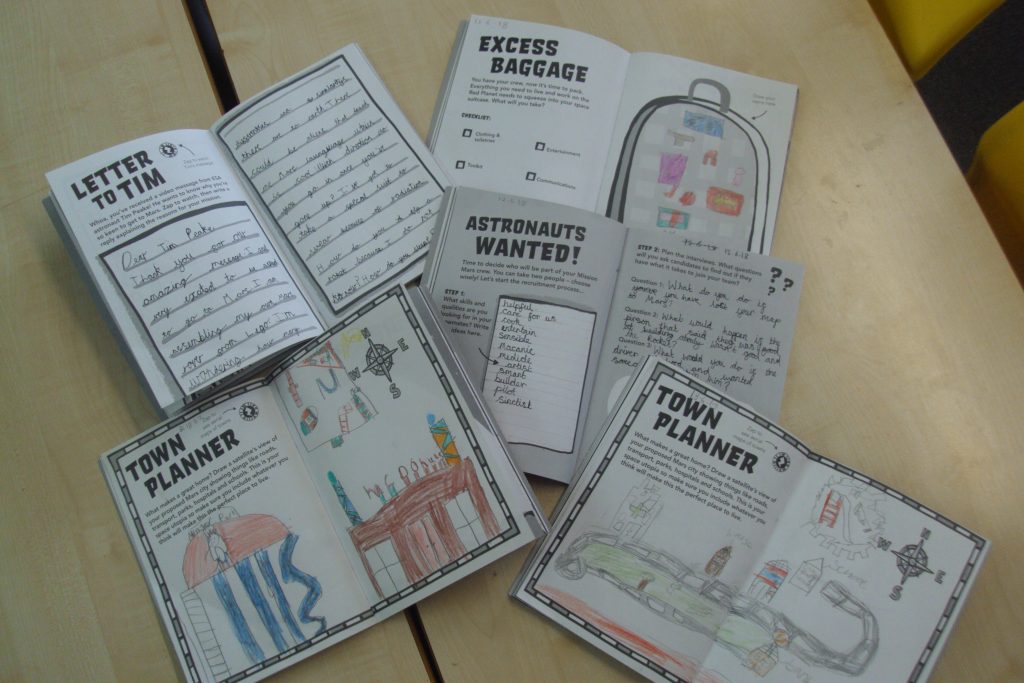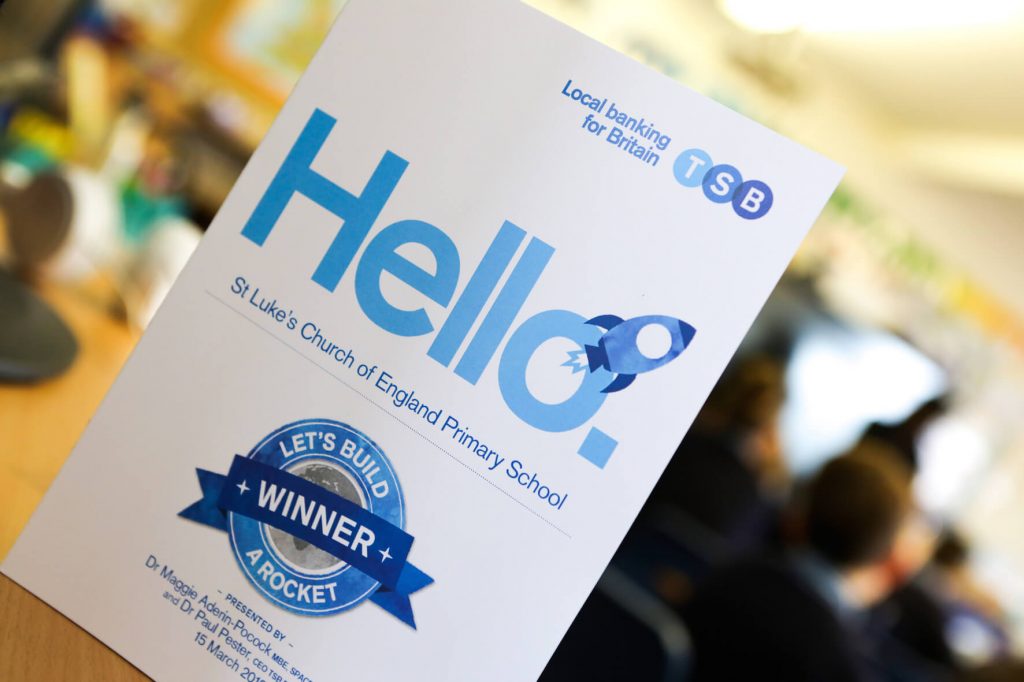In 2015, ESA astronaut Tim Peake went on his first space mission to the ISS. While Tim was in space, his mission ojective back on Earth was to inspire as many children as possible to see themselves in careers in science, technology, engineering and maths (STEM). The UK Space Agency managed a portfolio of education projects to achieve this objective, including the Principia Space Diary. We created this free arts-based science programme with author Lucy Hawking, and distributed almost 40,000 copies to UK primary schools.

This programme was so successful that we received further funding in 2017 to create a new version of the Principia Space Diary that could be used in classrooms for years to come. Available in book form or as free downloadable activity sheets, the Principia Space Diary remains a core resource for hundreds of schools. It contains 60+ hours of curriculum-linked activities that take students through astronaut training, launching a rocket and conducting experiments in space.

“I am a home educator for my son Luke who is 7. He has special needs where he gets very anxious and doesn’t concentrate well. All that changed doing the Space Diary. He suddenly became eager to complete the chapters. He has learnt so much and constantly goes around telling anyone that will listen facts he has learnt from the Space Diary.”
Laura Irvine, Home Educator
Tim Peake inspired children to imagine themselves in space and STEM careers. Our goal with this programme was to ensure that this inspiration reached children who might not have an interest in science or who might not see themselves in STEM. Our cross-curricular and multimodal activities – all with a creative and visual approach – made the science accessible, regardless of interest or ability. Students also personalise their diary giving them ownership and confidence.
This program has had a fantastic impact on our class… This has inspired the pupils so much that we are now going to apply for our eco schools award.
Jennifer Love, Taynuilt
Written and developed by Lucy Hawking and Curved House Kids, the Space Diary programme was made possible by funding from the UK Space Agency and the European Space Agency, with additional academic support from Professor Peter McOwan at Queen Mary University of London and a fabulous team of teacher consultants and STEM experts.
Highlights
- Finalist for the Sir Arthur Clarke Award for Education and Outreach Team, 2017
- KS2 resources with ideas for differentiation for KS1/P2-3
- Teaching notes for each activity
- Curriculum guides for England, Northern Ireland, Scotland and Wales
- Teacher timelines for easy programme integration into a term, half-term or intensive week
- Blank lesson plan and reflection templates
- Flexible structure that allows activities to be experienced in order, chapter-by-chapter, or used standalone for individual lessons
- Multimedia features including original video footage and a special message from ESA astronaut Tim Peake, plus photos and other videos of Tim taken aboard the ISS
- Profiles real, diverse STEM experts to help students ‘see’ themselves in STEM
- Hard copy book available as class sets, single copies or Home Education packs
- Incentives for students like Mission Badge stickers
- Approved for Children’s University Passport programme
- Available in English and Welsh






“It is a massive testament to the skill of whoever designed the Space Diary that not one child had ‘lost’ theirs over the summer. Indeed they treasure them.”
Teresa Harris, Head of Science
Featured image credit: Tim Peake’s cheer squad at Simonside Primary School





































































